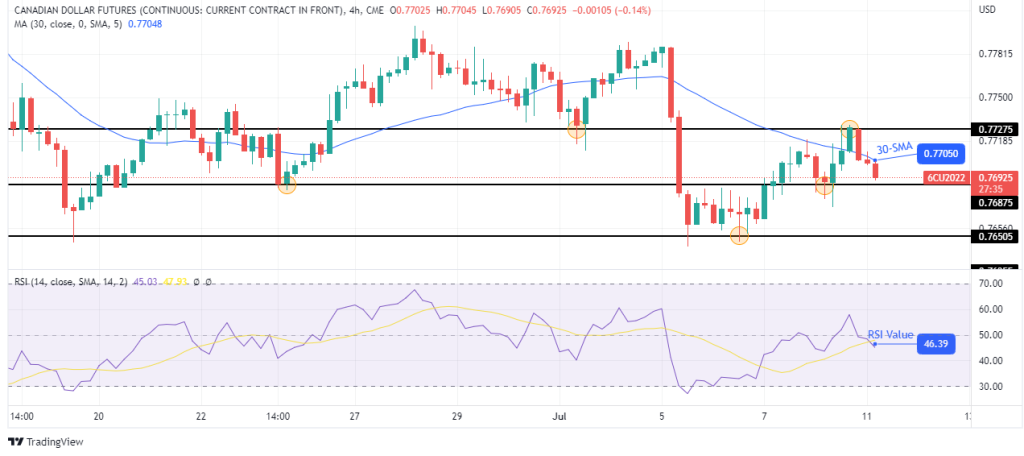- China has discovered a new Omicron subvariant.
- Oil prices are falling in anticipation of new restrictions in China.
- BOC is expected to deliver a 75bps rate hike.
Today’s outlook for the Canadian dollar (6C) futures is bearish as there are new demand worries after China discovered a highly transmissible Omicron subvariant. The number of infected people is also increasing, which could mean new restrictions.
“The market’s just responding to news flow, and China has grabbed the most attention so far,” said Commonwealth Bank commodities analyst Vivek Dhar.
Such an occurrence would hurt oil demand as China is the second-largest oil consumer. At the same time, Canada’s commodity-sensitive currency will suffer. The currency has been weighed down by falling oil prices, which are bound to hurt Canada’s trade surplus.
“Net long positions in WTI crude futures are now at their lowest level since March 2020, when demand collapsed amid the initial outbreak of COVID-19. This is despite ongoing signs of tightness,” ANZ Research analysts said in a note.
Canada’s job market is also in a bad state, as was shown on Friday when the employment change came in at -43.2K. There was a massive divergence between the US and Canadian job markets, which might put pressure on the Canadian dollar. Canada has a 35% chance of a recession over the coming year. The Bank of Canada is expected to deliver its most significant rate hike since 1998 on Thursday as it continues its fight against inflation.
“We now look for the Bank of Canada to hike to 3.25% by October 2022, with a 75 basis point hike in July followed by a pair of 50 basis point hikes in September and October,” noted Robert Both, macro strategist at TD Securities.
Canadian dollar (6C) futures technical analysis:

The 4-hour chart shows the price collapsing after a failed attempt to trade above the 30-SMA. Bears have come in to push the price back below the SMA, taking control of the market. Bulls have been pushing the price higher, but the move has been choppy compared to recent impulsive declines.
The RSI is back to trading below 50, showing bearish momentum. The bears aim to make a new low below the July 6 low. However, they must go through crucial support levels at 0.76875 and 0.76505.





